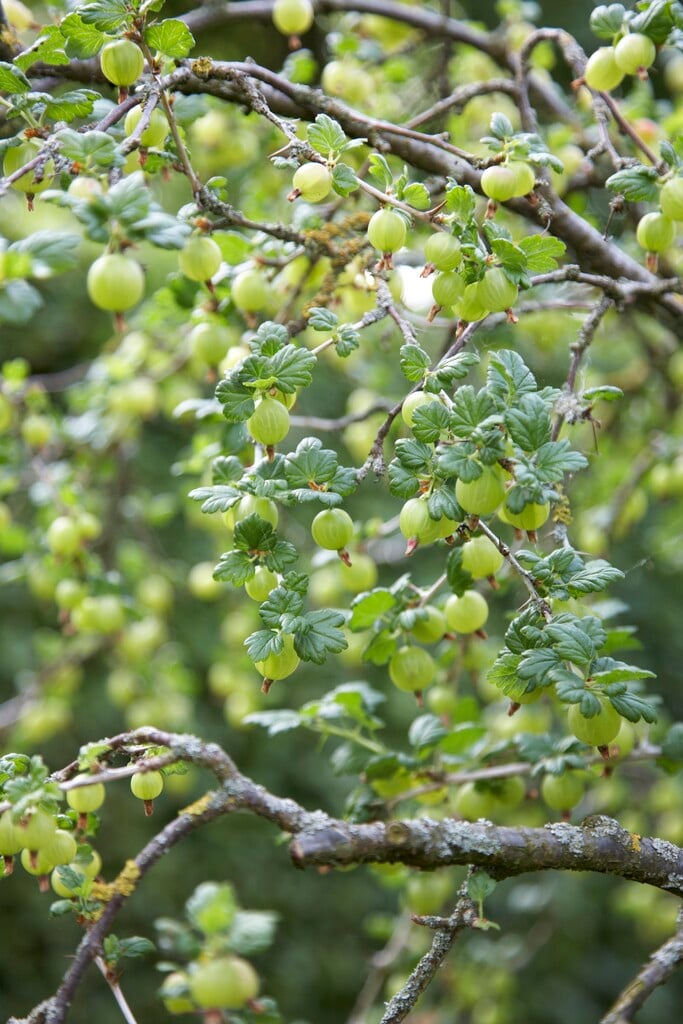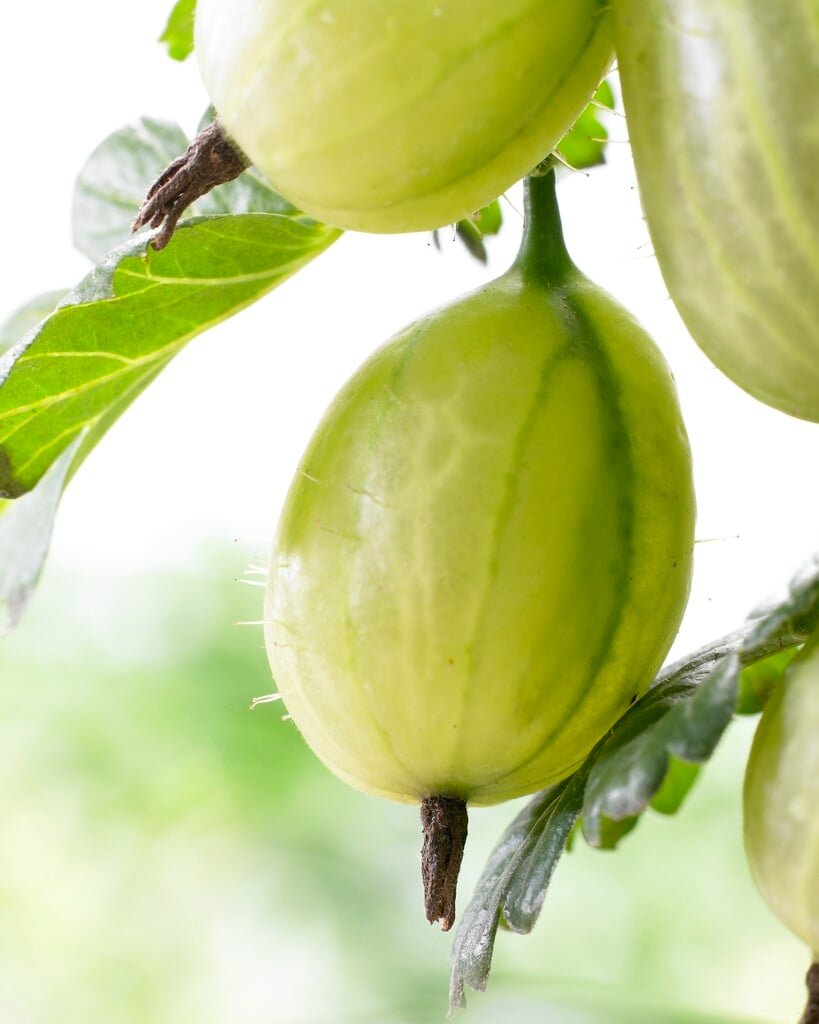Ribes uva-crispa
gooseberry
A bushy, woody plant with thorny stems and deeply lobed green leaves. Small insignificant yellow-green flowers are produced in spring followed by oval fruit which ripen in mid-summer and can be green, yellow, pink or red when mature. The species has many named cultivars - some are ideal for preserving or pies and jams, whilst others are sweeter and can be eaten straight from the bush. Some cultivars show good resistance to disease.
Synonyms
Ribes grossulariaSize
Ultimate height
1–1.5 metresTime to ultimate height
2–5 yearsUltimate spread
1–1.5 metresGrowing conditions
Moisture
Moist but well–drainedpH
Acid, Alkaline, NeutralColour & scent
| Stem | Flower | Foliage | Fruit | |
| Spring | Green Yellow | Green | ||
|---|---|---|---|---|
| Summer | Green | Green Pink Yellow Red | ||
| Autumn | Yellow | |||
| Winter |
Position
- Full sun
- Partial shade
Aspect
East–facing or South–facing or West–facing
Exposure
Sheltered Hardiness
H6Botanical details
- Family
- Grossulariaceae
- Native to GB / Ireland
- No
- Foliage
- Deciduous
- Habit
- Bushy
- Genus
Ribes can be deciduous or evergreen shrubs, sometimes spiny, with simple, usually palmately lobed leaves and small tubular or bell-shaped, solitary or racemose flowers borne in spring or summer, followed by juicy, sometimes edible berries
- Name status
Correct
- Plant range
- Europe, N Africa, SW Asia
How to grow
Cultivation
Grow gooseberries in a moist but well-drained soil that has been improved with organic matter. Mildly alkaline (chalky) soils are tolerated. Fruiting is best in full sun, but they will tolerate partial shade. They can be grown as goblet-shaped bushes or trained forms such as cordons. Water well as fruits swell and keep the base of the plants weed and grass-free. For more advice see gooseberry cultivation
Propagation
Propagate by hardwood cuttings in winter
Suggested planting locations and garden types
- Edible fruit
Pruning
Prune gooseberries in winter and summer
Pests
May be susceptible to gooseberry sawfly, birds and squirrels
Diseases
May be susceptible to gooseberry mildew and gooseberry leaf spot
Love gardening
Sign up to receive regular gardening tips, inspiration, offers and more
View our Privacy Policy
Get involved
The Royal Horticultural Society is the UK’s leading gardening charity. We aim to enrich everyone’s life through plants, and make the UK a greener and more beautiful place.

